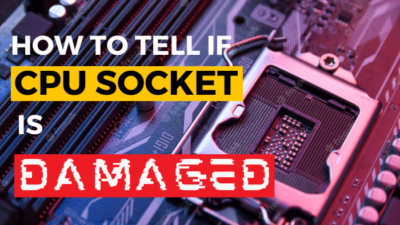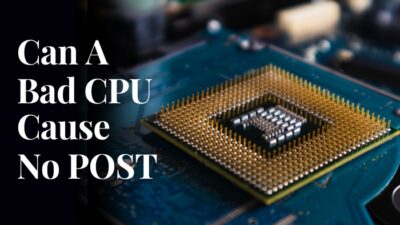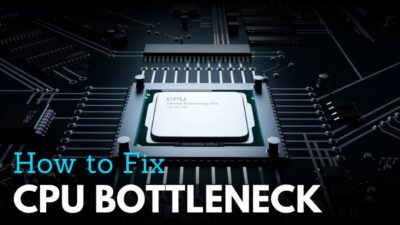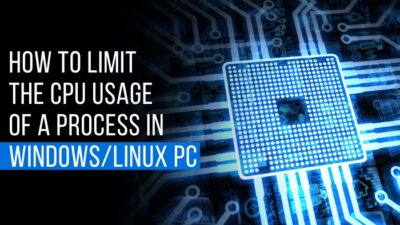The BIOS is the most important startup program on your computer. In fact, as soon as you turn on the computer, BIOS determines, configures, and associates computer hardware with the operating system.
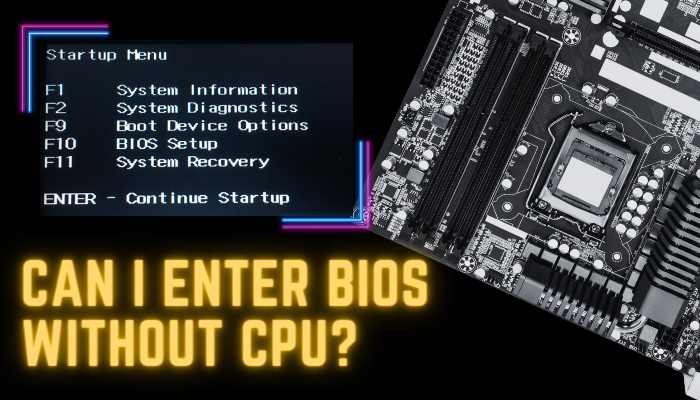 That being said, there are many situations in which you will need to access the BIOS, such as changing the boot order or overclocking if you are a gamer.
That being said, there are many situations in which you will need to access the BIOS, such as changing the boot order or overclocking if you are a gamer.
But, is it possible to enter the BIOS without the CPU? You need to read the article a bit more to get the answer. And I’ll keep it brief and to the point.
Can I Get Into BIOS Without CPU?
No, without a CPU/processor, you can’t get into the BIOS. The computer will turn on, but you will not receive any display. Also, the PC will give off 5 beeps, specifically, when the CPU is not connected. This sequence of beeps confirms that the CPU is absent or damaged.
Excluding the above beep code, there are additional motherboard beep codes which indicates a specific problem with your system.
Without a CPU installed, you can only update the BIOS. Furthermore, that is only possible with mid-tier to above motherboards such as the B550 or X570. My Ryzen 5 5600X had some issues when I brought my previous system, so I returned it for replacement.
Meanwhile, I ran my ASUS TUF Gaming B650-PLUS motherboard, which simply beeps when I try to turn on the system without the CPU. The RAM, GPU, and SSD were still connected, but no display was received.
However, like some expensive diamonds, only a few workstations or server motherboards allow you to access the BIOS without the CPU installed. Even so, these are not ordinary consumer goods, and only a few people have access to this motherboard. So, I am not going to bring this topic here.
Considering everything, you might be wondering “what this BIOS is”? Also, if you did not build your system and have never overclocked it, you may be unfamiliar with BIOS.
What is BIOS on a Computer?
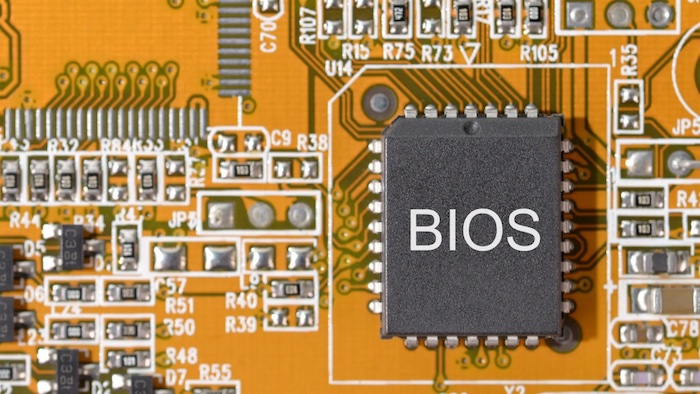 BIOS is the built-in core processor software that takes responsibility for booting up the system. Basic Input/Output System or BIOS is a ROM chip found on the motherboard that lets you access and set up your computer system at the most basic level.
BIOS is the built-in core processor software that takes responsibility for booting up the system. Basic Input/Output System or BIOS is a ROM chip found on the motherboard that lets you access and set up your computer system at the most basic level.
I hope that didn’t go over your head. Actually, BIOS is a system that checks all the hardware at the start of the boot process.
Furthermore, you may hear the term POST. When you turn on the computer, the system examines the BIOS and performs a power-on-self-test (POST) course to ensure that the hardware in the rig is operational.
But you need to remember that, most motherboards don’t pass the POST process without a CPU.
Additionally, you can hear beeps or receive an error message if your machine fails to POST. Also, the article won’t be complete if any hardware is broken or not present.
Why do You Need to Enter BIOS Without CPU?
There are many reasons to get into the BIOS. To change the way of the boot orders, enable or disable hardware, change system date and time, change memory settings, or overclock the system.
Even so, to enter the BIOS without the CPU there might be just one proper reason. That is to update the BIOS without CPU. When you build a new system or upgrade your CPU, you need to update the BIOS to register the new processor.
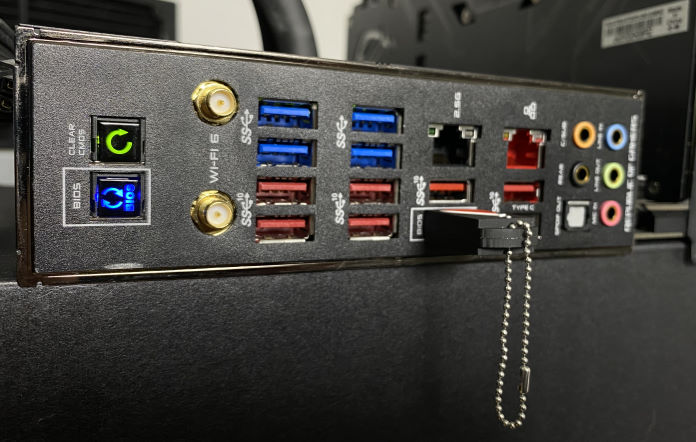
Without the CPU, just this BIOS upgrading or Flashback is allowed. Without the CPU, you can’t even tweak any other settings in the BIOS.
FAQs
What happens if you boot up a PC with no CPU?
A computer will not boot up unless there’s a CPU because a CPU is mandatory starting up the system, accessing Memory, trying to operate numerous drivers including the video card and hard drive, and trying to access BIOS or UEFI. These systems are required for a PC to boot up; without them, your computer will not function.
Can I boot into BIOS without GPU?
BIOS just appears to require a CPU and RAM to function, so it will work without a GPU. But you aren’t going to view what you’re performing unless you have some kind of graphics unit or APU.
What is UEFI boot mode?
UEFI defines a new method for communicating between operating systems and platform firmware, offering a compact BIOS alternate solution that utilizes only the information required to start the OS booting. Furthermore, UEFI offers added computer security mechanisms and backward compatibility with most existing BIOS systems.
Can the motherboard boot without a CPU?
A few motherboards would not power on without the CPU, but many wills. You could indeed verify the motherboard LEDs to see if they’re turned on, but without the CPU, you will be unable to perform any tasks on the computer.
Final Verdict
Without the CPU, you are unable to access the BIOS. Additionally, the system won’t POST from the BIOS without a processor, and you won’t get a display output.
As a result, you cannot modify the BIOS settings. The most you can get is — receive some POST beeps for the absence of the processor.
The only possible tweak you can do is update the BIOS without the CPU. That is the maximum you can accomplish without a CPU.

